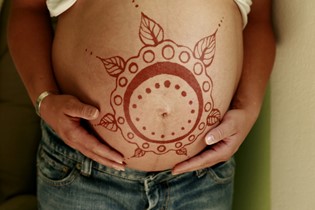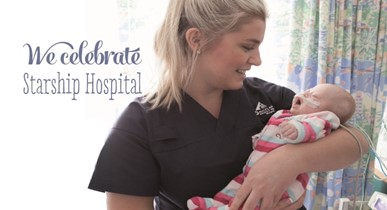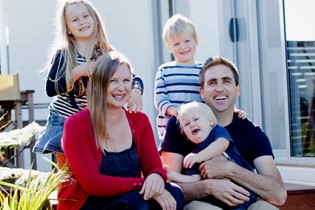Infertility - when to seek help

OHbaby! fertility expert Dr Richard Fisher speaks out about the risks of leaving babies till later in life and explains how to get help if conception is proving a challenge.
When school children are asked to draw a future timeline of their life it almost always involves having children themselves and ultimately becoming grandparents. There appears to be a biological imperative about having children and even though a small number of people make an active choice not to reproduce, that number does not seem to be increasing significantly. “When I grow up and have children” is an expectation that most people have whereas “If I have children when I grow up” might be a more realistic view.
Being faced with the inability to conceive, when the expectation of success is generally high, can be a devastating experience. All sorts of emotions are brought to the surface which threaten both the relationships within a partnership and those with friends and relatives who so commonly lack understanding about the significance of the problem. For a community which places such high value on having children, there is remarkably little empathy shown for those whose quest is being denied. It is a rare wedding or engagement where somewhere during the ceremony some mention of the likelihood of children in the future is not made.
I am often asked if the incidence of infertility is increasing but I think the current evidence suggests that generally speaking it is not. However, we need to consider the effect of age on the likelihood of conception. With the age of New Zealand mothers at their first birth now at almost 30 years old there is an increasing group who are starting to try and have a family in their mid-30s. For them, the speed of conception is limited and the risks of further delay caused by age alone, or by a combination of age and mild infertility factors, rises significantly.

A 25-year-old woman has a 25% chance of getting pregnant in any one month, but by 35, the chance of conception has fallen to 16%. At 38 it is about 11% and at 40 it is just 6%.
You can see how dramatically the woman’s age at the time of trying affects the chance of conception in each month and indeed cumulatively over a year. The woman who starts trying at 40 has around a 50% chance of being pregnant at the end of the year but, at 37, the cumulative figure is close to 75%.
Advancing maternal age is the single biggest cause of what appears to be an increase in the incidence of infertility. The sad fact is that the time when couples would most like to conceive quickly is also a time when nature makes conceptions occur more slowly.
To complicate matters the incidence of miscarriage increases with maternal age so that by age 40 about 40% of all conceptions end in miscarriage.
No matter what the woman’s age is however, experiencing an unwanted delay in getting pregnant can be enormously stressful.
When to seek help
So when should couples (we certainly shouldn’t forget about the men) present for investigation of apparent subfertility? Traditionally the term infertility is used after a couple has been unsuccessfully trying to get pregnant for a year or more. Clearly this is not entirely sensible because if you are 25, not being pregnant by the end of six months would be quite unexpected. Whereas if you are in your late 30s, waiting for a year before seeking some sort of reassurance simply means your chance of conception a year later is significantly less than it was when you started.
In my view, the only women for whom waiting a year seems sensible are those aged between 30-35. It can be quite normal to take up to a year for this age group to conceive, and at the same time a delay of a year won’t make a huge difference to the chance of conceiving the following year.
Earlier than this age means the likelihood of a diagnosable problem is high, and later than 35 gives the opportunity to exclude early any obvious problems affecting conception. Not everybody should have treatment when they first present, but careful consideration of your medical history and having a semen test can prevent unnecessary delay before intervention begins.
Older couples though face the dilemma that while delay in conception is normal, it also means that treatment (should any be required) won’t start until the chance of conception has deteriorated further.
The Fertility Associates biological clock app can help you decide when you should seek help. And sometimes, being reassured early that things are likely to be normal is often enough to relieve the psychological burden you may be feeling.
Where to go for help
If you have a concern about infertility then your first stop should be your GP. Some initial investigations will be arranged which will pick up anything of concern in either partner’s medical history. Anything obvious should lead to early referral but sometimes that initial reassurance from a medical professional is sufficient.
If a referral to a gynaecologist is suggested, make sure that the person you are going to see has experience in subfertility. Reproductive medicine is now a well-established sub-specialty of gynaecology and most gynaecologists see very few patients with infertility during their normal work. What is more, modern reproductive medicine requires significant training in specific areas for couples to be sure they are obtaining the best advice.
You should also be wary of the growing risk posed by the development of IVF centres internationally where a lack of training leads to the routine treatment with IVF, rather than less invasive interventions which might prove to be just as effective. If your clinic offers only IVF, then that will be the treatment you will get.
Having said that, investigation of subfertility is not necessarily complex. About 50% of all couples presenting with delay will have a male factor reducing their chance of conception per month. Like many things in biology, a number of small issues can lead to a very significant effect on outcome. Clearly no (or very few) sperm is a major problem by itself, however sperm samples which are suboptimal (but not completely abnormal) may significantly limit the couples’ chance of conceiving.
Not uncommonly, semen analyses are the last investigations many couples proceed to. I am sure it should be the first. For both partners, simply taking a careful medical history can sometimes point in the direction of likely problems. Previous surgery, irregular periods or history of pelvic pain or infection are important indicators of potential problems.
A typical first visit to your reproductive medicine specialist might involve history-taking, the arranging of some underlying hormone tests, a semen analysis, and an ultrasound examination to assess the status of your ovaries and uterus. By the time of your follow up visit it will usually be clear if there are any obvious problems.
Decisions then need to be made as to whether further investigations, particularly looking at the status of the fallopian tubes and pelvis, are needed. These are not routine tests and a discussion around the necessity for these will depend on multiple factors that arise from initial assessment. There is only limited use in testing the normality of the fallopian tubes if the semen test shows almost no sperm. If IVF is going to be the answer, then avoiding unnecessary investigations on the way would seem wise.
Seeking support
I began this article talking about the emotional stresses of infertility. The availability of suitable psychological counselling as part of the initial assessment of subfertility is very important. In my experience, most couples are initially reluctant to use this service, but nearly everyone who does finds it very helpful in terms of setting strategies in place to deal with the stresses of delay, potential treatment and the conflicts it will lead to in other aspects of their lives.
Less formal support groups are also available in the community organised by Fertility New Zealand (fertilitynz.org.nz). These support groups are very helpful for those in their investigative phase as well as those who have embarked on treatment.
It is really important that couples are not intimidated by the apparent complexity of modern reproductive medicine. Most couples will conceive without intervention, given time. Those who clearly have problems can often resolve them with relatively simple interventions. IVF is not the only intervention available although at times it will be the first and obvious treatment for some couples.
My best advice for couples would be to present early for an assessment of the likelihood of problems and then to establish a rational plan about intervention, if and when it becomes necessary.
My advice to families and close friends of couples who express their concerns about subfertility is to listen carefully, to empathise and to avoid giving gratuitous advice based on no real knowledge of the underlying problem. Telling someone to relax when the problem they have is causing them to be stressed is unhelpful. Advising about treatment without understanding that particular couples’ problem is unhelpful, too.
What does help is a listening ear and a shoulder to cry on, should it be required. And for those of us lucky enough to have children, really appreciating that gift, especially in the face of those who are struggling to have the same.
|
Dr Richard Fisher (CNZM, FRCOG, FRANZCOG, CREI) is Adjunct Professor in the Liggins Institute. He co-founded Fertility Associates in 1987 and is now New Zealand’s foremost spokesperson on infertility issues. In 2009 he was made a Companion of the NZ Order of Merit. For more information on fertility issues go to fertilityassociates.co.nz. |

AS FEATURED IN ISSUE 26 OF OHbaby! MAGAZINE. CHECK OUT OTHER ARTICLES IN THIS ISSUE BELOW

















